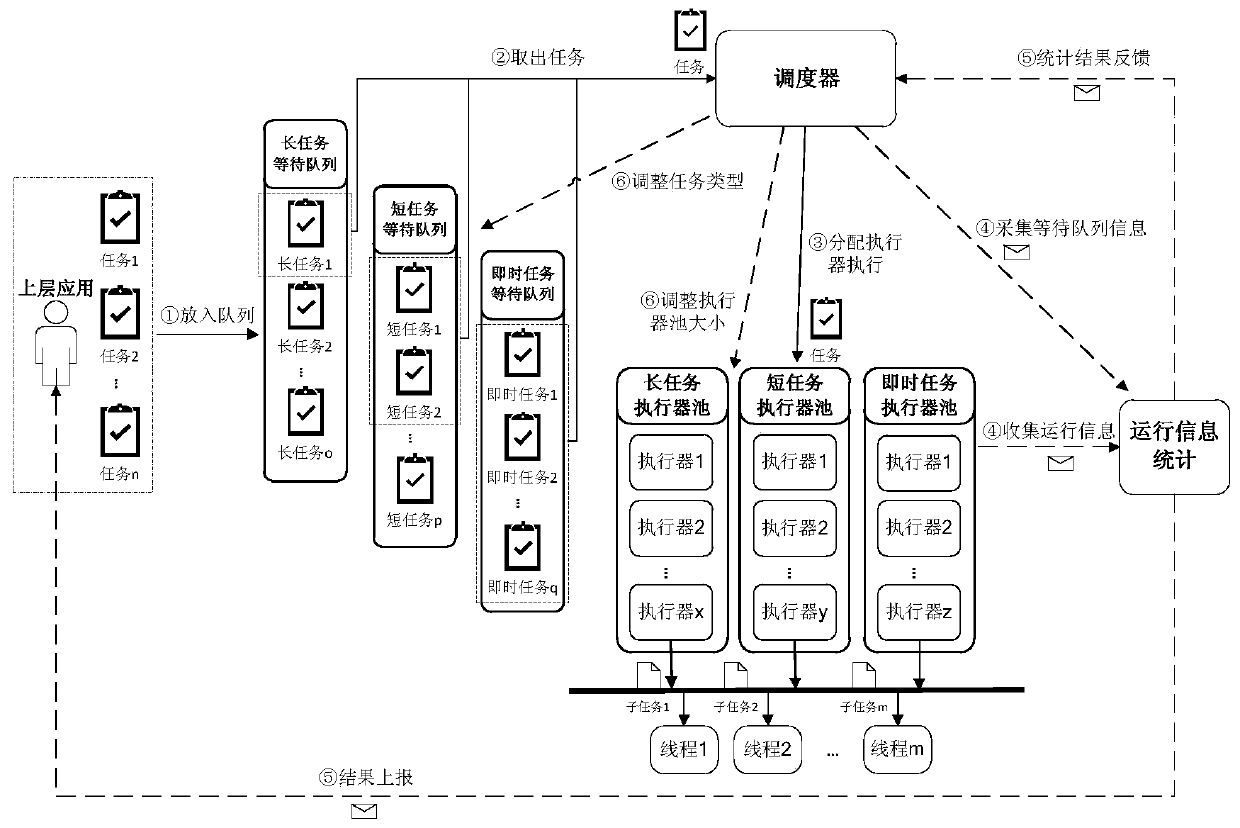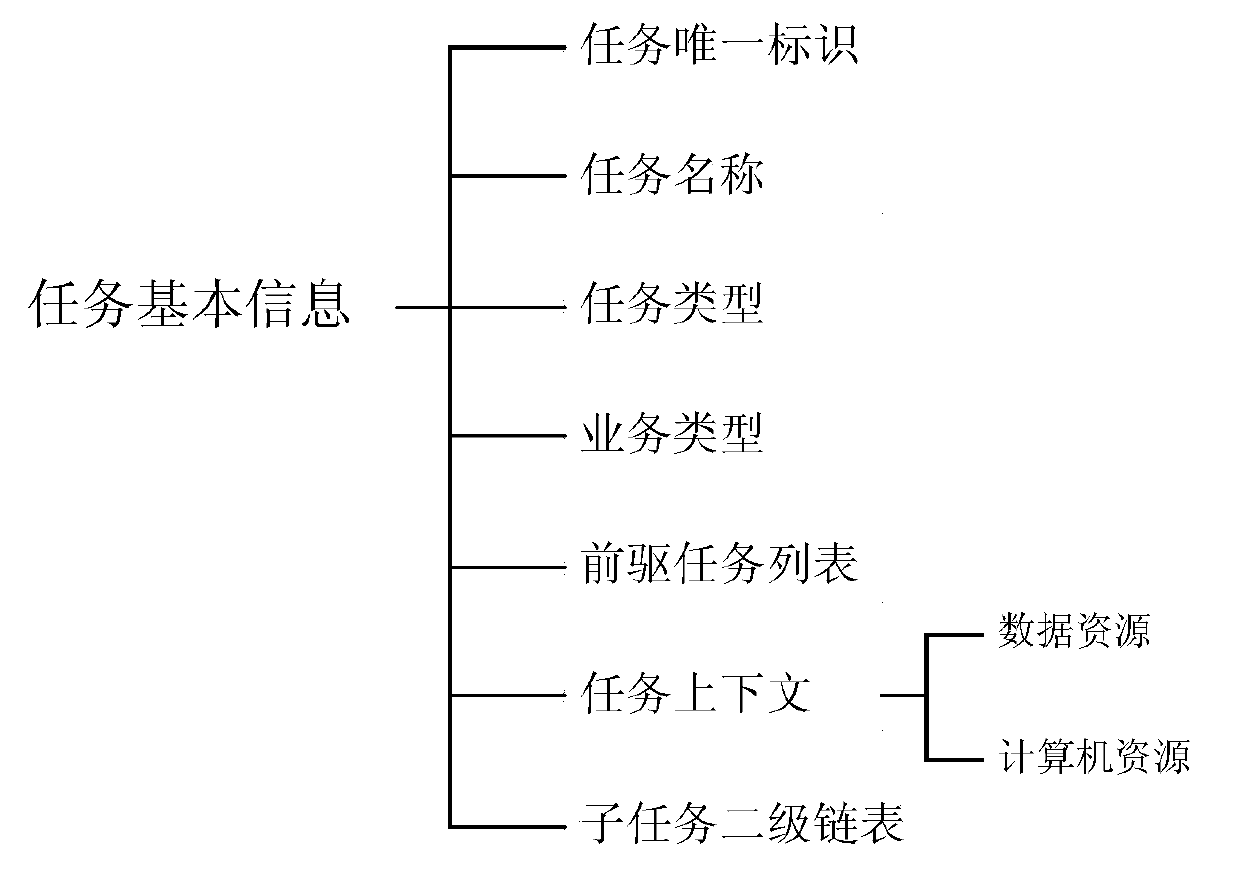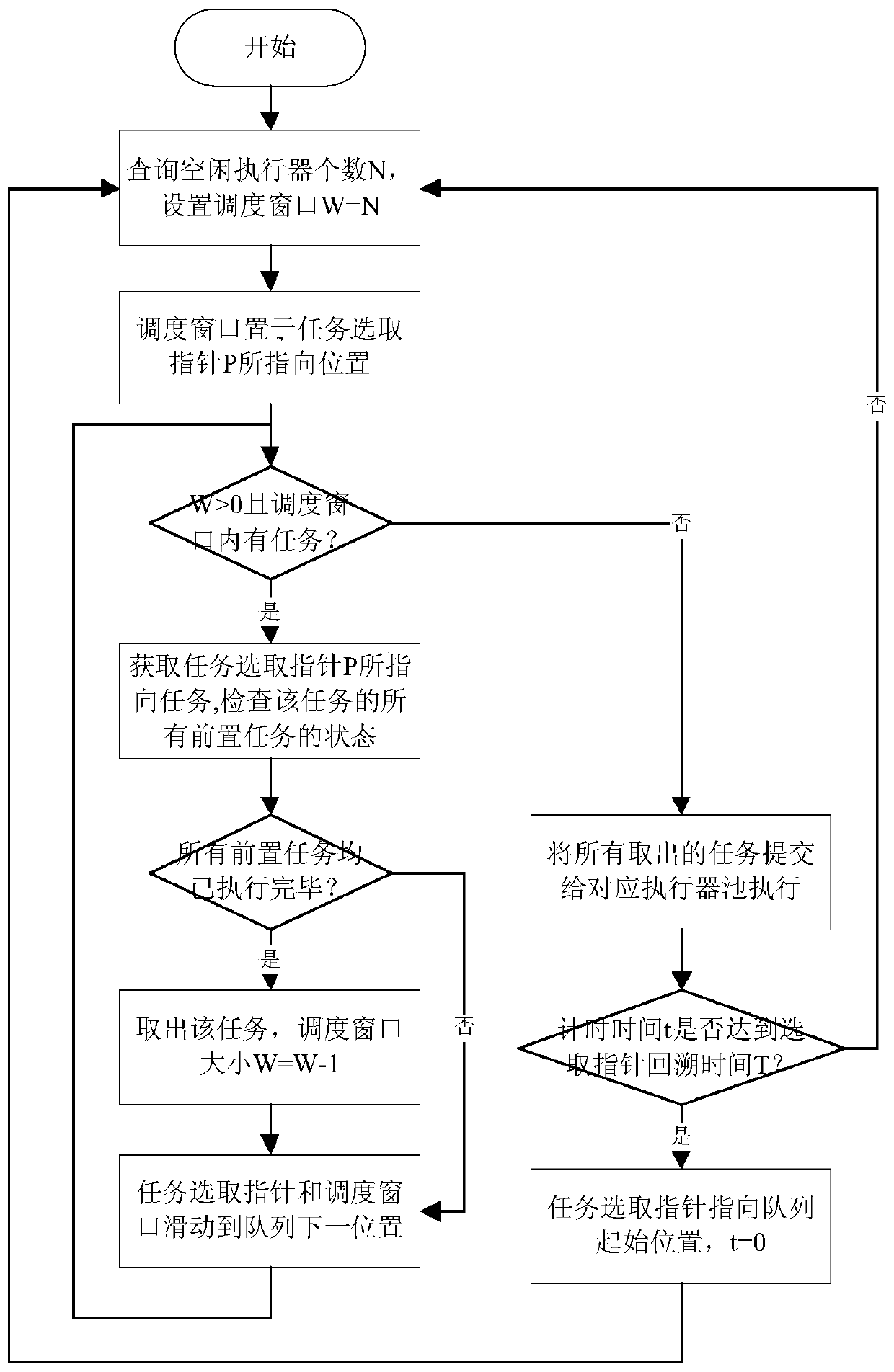A Two-Level Adaptive Scheduling Method for Massively Parallel Data Processing Tasks
A technology of data processing and scheduling methods, applied in the direction of electrical digital data processing, multi-program device, program control design, etc., to achieve the effect of realizing system resources, high flexibility, and improving task processing efficiency
- Summary
- Abstract
- Description
- Claims
- Application Information
AI Technical Summary
Problems solved by technology
Method used
Image
Examples
Embodiment Construction
[0053] In order to make large-scale data processing tasks orderly and efficiently executed in parallel, the method of the present invention processes tasks from two levels, which aims to maximize the amount of parallelism and reduce task waiting or execution time: first level, task level, each Each task declares its dependent predecessor tasks, and the scheduler builds a topology based on this to ensure that tasks are executed in the order of dependencies, and tasks without dependencies can be executed in parallel; the second level, the subtask level, divides the tasks into a series of actions or functions The data and resources required by each subtask have been loaded by the first-level task layer. The purpose of dividing the subtasks is to further increase the degree of parallelism, and assign subtasks without resource conflicts and no execution order to multiple threads at the same time carried out.
[0054] Data processing tasks refer to tasks such as data collection, data p...
PUM
 Login to View More
Login to View More Abstract
Description
Claims
Application Information
 Login to View More
Login to View More - R&D
- Intellectual Property
- Life Sciences
- Materials
- Tech Scout
- Unparalleled Data Quality
- Higher Quality Content
- 60% Fewer Hallucinations
Browse by: Latest US Patents, China's latest patents, Technical Efficacy Thesaurus, Application Domain, Technology Topic, Popular Technical Reports.
© 2025 PatSnap. All rights reserved.Legal|Privacy policy|Modern Slavery Act Transparency Statement|Sitemap|About US| Contact US: help@patsnap.com



